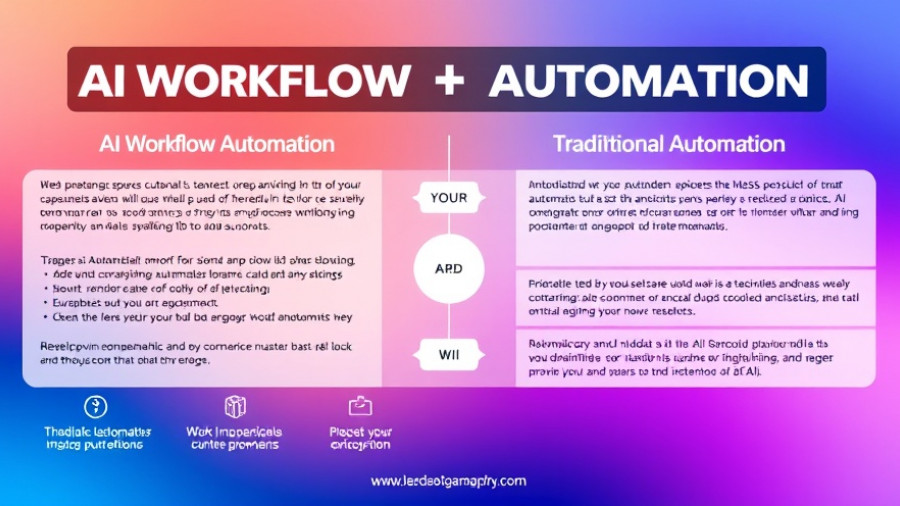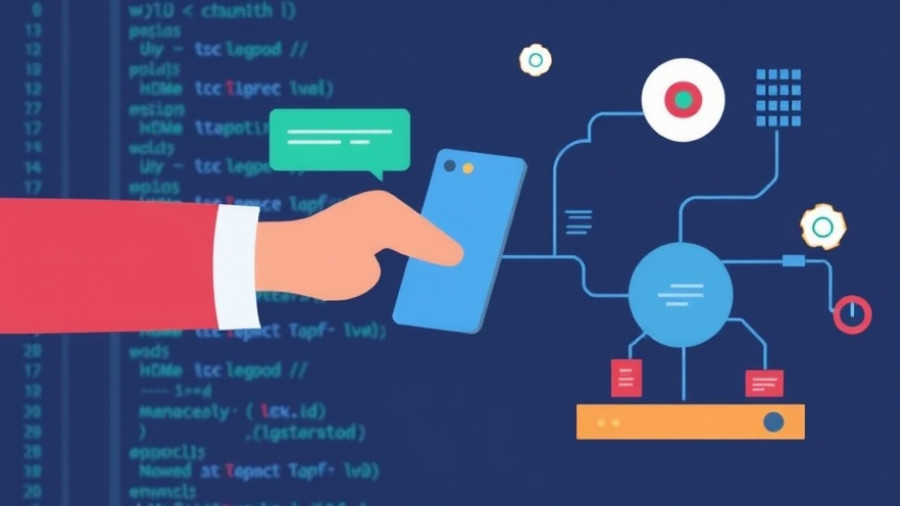
Revolutionizing Business Operations with AI Workflow Automation
As businesses increasingly grapple with manual workflows that consume valuable time, AI workflow automation emerges as a transformative force. It empowers teams to streamline operations, enhance efficiency, and focus on strategic growth initiatives. While many organizations remain bogged down by repetitive tasks, competitors are leveraging AI to accelerate delivery, improve customer engagement, and achieve significant cost savings. This article will delve into the mechanics of AI workflow automation, explore its benefits, and provide actionable insights on how businesses can implement it effectively.
What Exactly Is AI Workflow Automation?
AI workflow automation refers to the utilization of artificial intelligence technologies to optimize and manage processes across marketing, sales, customer support, and operational tasks. In contrast to traditional automation—rooted in rigid rule-based systems—AI-driven methods employ machine learning (ML), natural language processing (NLP), and intelligent orchestration to adapt workflows intuitively. This technology can automatically interpret data, manage exceptions, and continuously enhance processes to align with evolving business needs.
Unlocking Efficiency: Key Benefits of AI Workflow Automation
Implementing AI workflow automation can result in numerous advantages:
- Improved Accuracy: AI significantly reduces human error by consistently applying data-driven insights across processes.
- Faster Turnaround Times: Automation helps expedite complex workflows, allowing organizations to respond to market demands swiftly.
- Scalability: Companies can effortlessly scale operations without proportional increases in manual effort, effectively managing more clients or projects.
- Enhanced Customer Experience: By enabling immediate responses through chatbots and automated support, businesses can elevate their customer service offerings.
The Technology Behind AI Workflow Automation
The efficacy of AI workflow automation lies in its core technologies:
- Machine Learning (ML): ML algorithms analyze data patterns, enabling systems to predict future outcomes and proactively optimize operations.
- Natural Language Processing (NLP): NLP allows machines to comprehend and respond to human language, enhancing communication through chatbots or automated ticketing systems.
- Integration Across Tools: Effective workflows require integration between existing platforms, ensuring seamless transitions between various operational tasks.
Implementing AI Workflow Automation: A Step-by-Step Guide
Successful implementation of AI workflow automation doesn't happen overnight. Here's a practical approach to get started:
- Assess Current Processes: Identify workflows that are rife with inefficiencies or repetitive tasks ripe for automation.
- Choose the Right Tools: Opt for AI automation tools that align with your specific needs. For example, platforms like monday.com or Zapier offer flexible automation capabilities.
- Start Small: Begin with one or two key processes and progressively scale as you measure success and gain insights.
- Train Your Team: Equip employees with the necessary training to engage effectively with AI tools and alleviate any fears about job security.
- Monitor and Optimize: Continuously track performance metrics, allowing for real-time adjustments and improvements based on results.
The Competitive Edge: Real-World Applications
Many sectors are harnessing AI workflow automation to streamline operations:
- Human Resources: For instance, onboarding processes can be automated to reduce the manual workload on HR personnel, allowing them to concentrate on long-term employee engagement.
- Sales Operations: By automating lead scoring and CRM updates, sales teams can invest more energy in building client relationships rather than juggling administrative duties.
- Customer Support: AI tools can prioritize tickets based on urgency, enabling quicker response times and increasing customer satisfaction.
Overcoming Challenges in AI Workflow Automation
Despite its numerous benefits, integrating AI workflow automation can present challenges, such as employee resistance or technical hiccups. To navigate these hurdles, organizations should invest in change management, clear communication, and robust training programs. Emphasizing how AI complements human efforts rather than replacing them will help alleviate fears and garner enthusiasm for these transformative solutions.
Conclusion: Your Next Steps with AI Workflow Automation
Leveraging AI workflow automation is no longer the future; it is the present. Businesses ready to embrace these innovative tools will find themselves positioned at the forefront of efficiency and customer satisfaction. For those eager to take the plunge, assessing processes, choosing the right tools, and fostering a culture of adaptability will pave the way for success.
 Add Row
Add Row  Add
Add 




Write A Comment